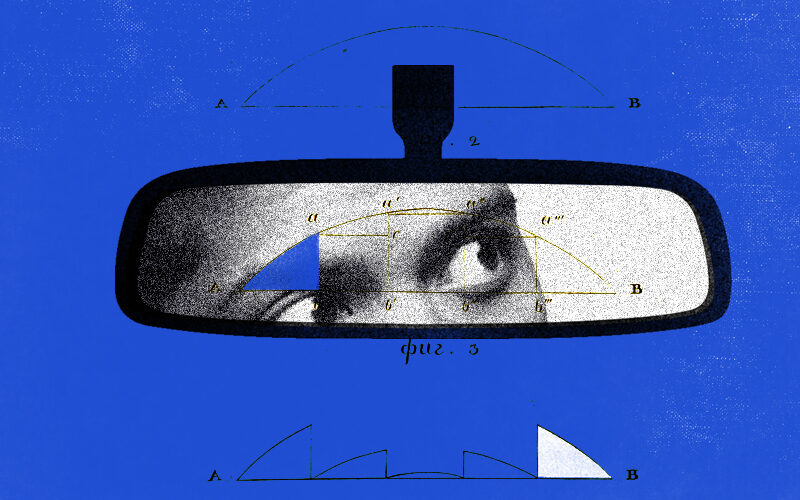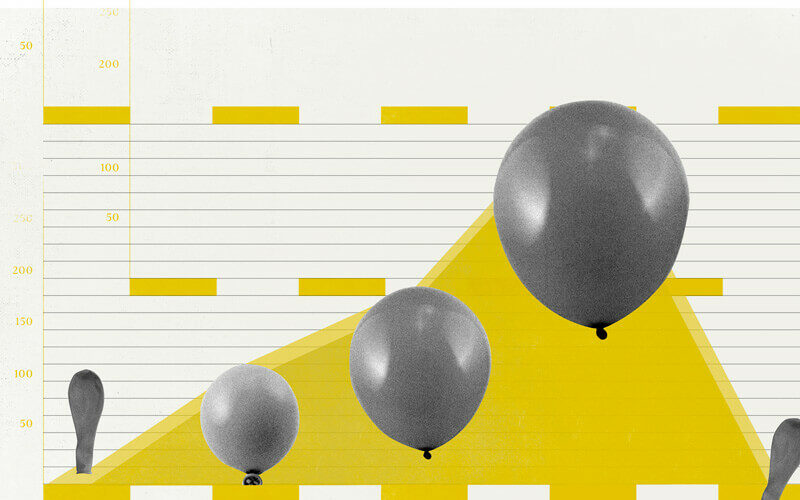The concepts of authenticity and advertising are kind of complete opposites.
Advertisers have strived for decades to master those elusive things that constitute authenticity – provenance, personality, credibility, relatability, realness.
Marketers pay celebrities and sports figures millions to achieve it. And businesses are now made or broken by customer reviews, influencer recommendations, and that most effective yet least buyable strategy for selling: word of mouth.
A far cry from social sales platforms like Facebook and Instagram, TikTok is a case study in authenticity. Businesses are pouncing, trying to harness this precious and powerful source of “realness” and – inevitably destroying it in the process.
Is there a way to both advertise and be authentic on the unofficial growth engine that is TikTok?
The power of the platform
Have you ever bought something because you saw it during your TikTok scrolling session? If you have, there’s a 71.2% chance you didn’t go looking for it, and had no prior intention of buying it.
It’s highly likely you were spontaneously influenced by a real person rather than a featured ad. That person may or may not have made a financial gain from your purchase.
That’s the thing with TikTok: it’s never really clear.
The hashtag #TikTokMadeMeBuyIt has 13 billion views. And users (or “creators” as they’re known) are not selling flashy stuff. They’re hawking low-cost life enhancers like mug warmers, basic Amazon fashion finds, foot massagers, even cleaning products. They’re almost anti-glamour – a dramatic departure from glossy magazines, TV ads, and Instagram feeds.
TikTok sellers fall into three categories:
1. Businesses who buy ad space on the platform. These videos merge with all the others in the feed, but they’re clearly labelled ‘Ad’, and end with a link to the shop. These paid placements can also take the form of ‘takeover ads’, which appear before anything else when you open or refresh the app and last for a minimum of 5 seconds.
2. Small businesses who use TikTok as a brand activation platform. Think order packaging videos, product demonstration and education, “how we got started” storytelling, industry tips, transparency. This new mode of business is truly captivating Gen Z Aussies. 60% of them actively ‘want to see content about products from the brands that make them’.
3. Individuals who are affiliated with businesses. They might be influencers, brand associates or ambassadors, or Amazon affiliates. Companies provide unique product links for users to post in their bio. When it’s clicked on and converted, they get a cut. These are in many ways the most powerful presence on TikTok. Often, they don’t present as influencers. Just regular folks with a big following who kindly share their product experiences.
The best part for types 2 and 3? They’re not legally obliged – yet – to tell you it’s an ad.
Entertainment meets ecommerce
There’s now a fourth and much more official category of TikTok selling: the e-commerce platform TikTok Shop.
Piloted last year in Indonesia and the UK and rolled out across South East Asia this year, TikTok Shop allows creators to add storefronts and users to add a shopping tab to their feeds, integrating product browsing with their usual entertainment.
In a possible preemptive strike against the usual challenges of two-sided marketplaces, TikTok Shop will set the terms. Return policies and shipping options are standard, and sellers pay a 1% commission fee (far cheaper than Etsy’s 6.5%).
Yes, it’s yet another ecommerce platform. But with 1 billion active monthly users, and another 750 million expected in 2022, it stands to be a formidable challenger.
The power of the algo
Because of TikTok’s ever-learning algorithm, users will be exposed to products they may be interested in not once but a few times. If they like or engage with a video about a product, they’ll be shown several more. Many will not be ads, but genuine conversations happening within the For You Page ecosystem.
This loop is of course by design – TikTok has modellised it. It’s a vertical figure-8 infinity symbol, with Discovery on the top right, Review on the bottom right, Participation on the bottom left, and Consideration top left.
Sitting on top of the loop is Brand Acceleration. Below it is Community Amplification. And in the centre is Purchase. It’s an intricate web, but it cultivates that most covetous prize: authenticity.
Users don’t feel like they’re being sold to. If anything, they feel like purchasing was their idea.
How companies are capitalising
Calm’s embrace of TikTok is a great example of social media strategy done right.
Mindfulness and self care are already growing spaces among TikTok’s young user bases, who were already engaging with the manageable entry point Calm provides. Calm noticed people were imitating their short form sleep and meditation content, and even tagging themselves as narrators. So they decided to cast their new voice actors through the #NextVoiceOfCalmContest. At the time of writing, the winner hasn’t yet been announced (7 June), but the tag has had 4.1 million views.
Dunkin’ did something similar with #DunkinCastingCall, asking influencers to audition for their next ad. Casting is almost a byproduct in both of these cases. The real reward was the 5.5 million views Dunkin’ racked up, and the authentic, entertaining customer engagement it generated.
If you’re wondering if this kind of engagement actually leads to sales, ask crowning TikTok viral campaign winners E.L.F. Cosmetics. The #eyeslipsface challenge generated over 1 billion hits and boosted the company’s Q3 net sales by 6%.
These are simple (and extremely cheap) concepts, but “going viral” isn’t child’s play. Big brands are backed by big creative think tanks who “get” how the algorithms work.
How can smaller startups leverage the same influence?
1. Your content can’t be an ad thinly veiled as content.
It has to offer some value other than a vehicle to purchase. It has to be entertaining but not try-hard, informative but not boring. It has to be relevant. Ask yourself, would I have something to post about if I wasn’t trying to sell something? If not, find that thing. Think content first, product second.
2. Find your community.
As with any marketing, your efforts are meaningless without a solid understanding of your audience. Communities are complex on TikTok. You’ve got your obvious niches like BookTok and BeautyTok. Then you have niches within the niches, and they’re highly politicised. Within FitTok you’ve got powerlifters infighting with pilates instructors. You don’t want to end up on ‘the wrong side of TikTok’ with an alienating viewpoint or – worse – misinformation.
Once you’ve found your community, you also need to contribute to it. Participate in the ecosystem by posting discussion videos, commenting, following, contributing to hashtags, and initiating challenges.
3. It’s as simple as a hashtag.
By the time TikTok came of age (and it took several years and global pandemic for that to happen), hashtags were a deeply ingrained practice in online interaction.
People tag things and brands for no reason, or because it’s funny. The hashtag #Cheerios has 120 million views on TikTok, and it’s just people eating cereal. But you can bet Cheerios have made money off those millions of tiny, almost subconscious reminders that the brand exists.
4. It’s about relatability.
A far cry from the aspirational aspects of Instagram and Pinterest, TikTok users like real and raw. That’s why micro-, nano-, niche, and even accidental influencers are so successful. In complete opposition to usual corporate rules, overdoing the polish or production value will detract from your credibility rather than add to it.
To layer commerce onto content, use relevant hashtags to help surface your brand content, and consider starting hashtag challenges by appealing to peoples’ creativity (or vanity).
5. Partner with creators.
Do you have a face for radio? Partnering with established TikTok creators and influencers can save you a world of pain trying to build a platform of your own. And you don’t have to spend hours scrolling through content to find them (although you could).
Creator Marketplace can help match you with creators with similar brand values and an appropriate personality, as can matchmaking services like Social Cat.
Remember that TikTok creators don’t usually work to scripts. They have loyal and extremely perspective audiences who will detect when words have been put in their mouths. Allow them the creative freedom to speak to their followers in the way they know best.
What’s next for TikTok?
It’s looking likely TikTok will roll TikTok Shop out into Western markets. It may echo features like the shopping catalogues and direct checkout interfaces of Facebook Marketplace.
‘Live shopping’ will apparently become a thing. Product linking will be easier, and conversation will be made much more trackable, enabling brands to attribute video views to sales.
Brands and businesses must remember that – despite the tentative success of TikTok’s early ecommerce days – the platform was built for entertainment. Authenticity must be preserved at all costs. The second it dies, all that lucrative potential dies with it.











